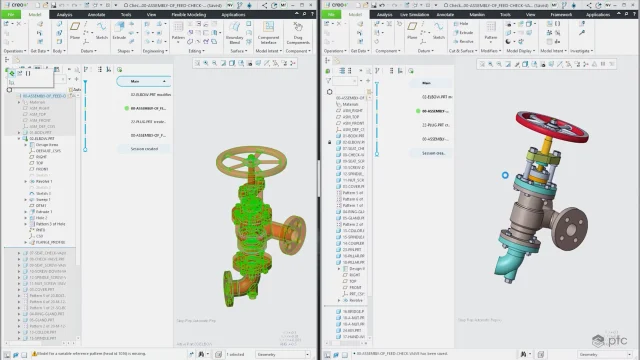PTC enhanced design, simulation, manufacturing and more in the latest version of its desktop CAD software, plus an update to the cloud-based Creo+
PTC launched Creo 11, the new version of its desktop CAD software, and updated its cloud counterpart Creo+. The new release offers a slew of improvements that longtime users will appreciate, according to the developer.
“Creo 11 and Creo+ deliver enhancements that design engineers will use every day,” said Brian Thompson, general manager of Creo at PTC, in the Creo 11 announcement.
Here’s a brief rundown of the main enhancements for design, simulation, manufacturing, collaboration and more. For users seeking a deeper dive, PTC will be hosting a launch webinar on May 15, 2024 to demonstrate the new release.
Multi-body concepts
PTC Creo 11 allows designers to work with multiple sheet metal and regular bodies in the same design, which PTC says will improve their ability to design sheet metal parts in context.
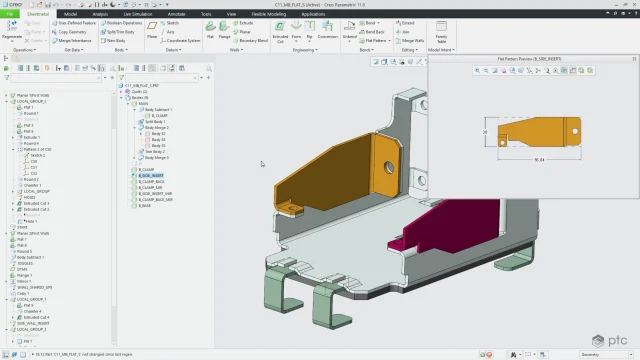
Shrinkwrap update
An updated Shrinkwrap feature allows Creo 11 users to transfer solid bodies from parts of an assembly into a single multi-body part, which PTC says will make working with complex designs easier and faster.
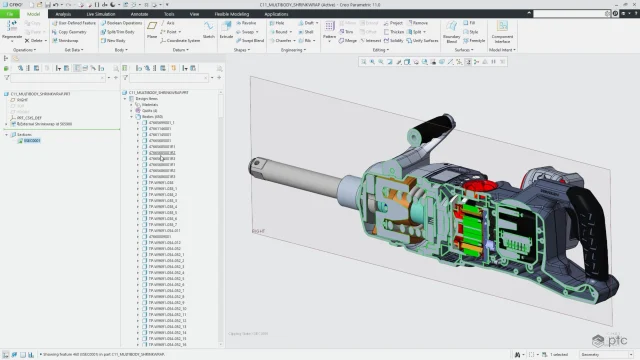
Enclosure volume update
PTC has optimized the enclosure volume feature in Creo 11, which allows users to calculate the minimum bounding box of a part or assembly for packaging.
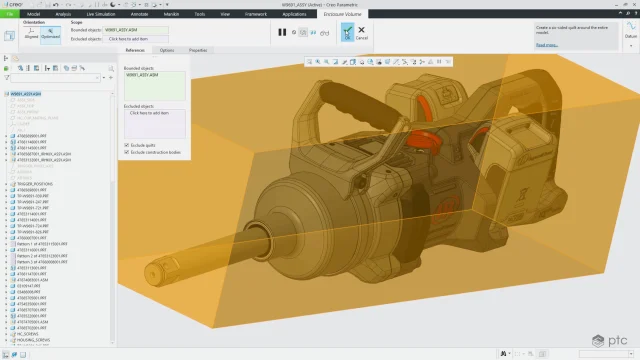
Improved cabling tools
Creo 11 is better at manipulating cable locations, which can now be placed tangent to any coordinate system. Additionally, PTC says it’s made the remove locations tool easier to use, and made it easier to place custom components and splices. The new release also allows harness settings to be changed during routing, and it improves the cabling tree with greater visibility into harness structure and cabling entities.
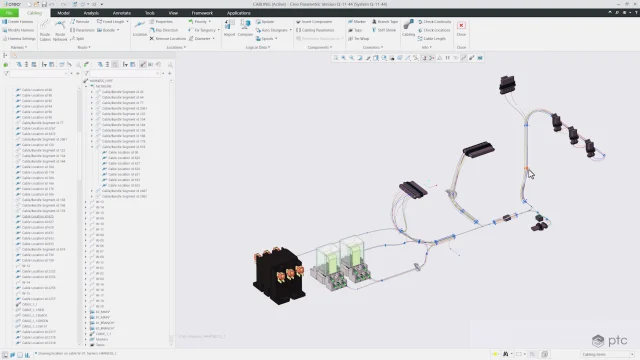
ECAD transparency control
Creo 11 now allows designers to control the transparency of overlapping ECAD layers to improve visibility into their PCB designs.
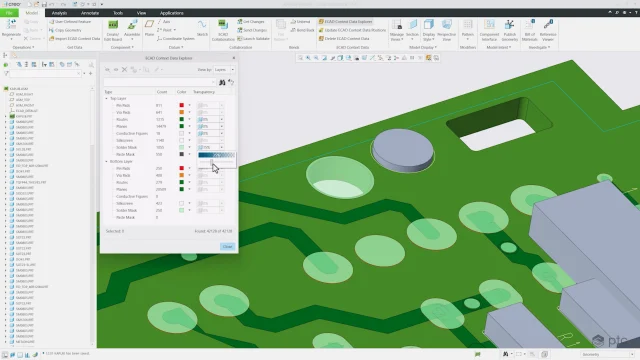
Improved composite design
PTC says it’s expanded Creo’s composite design, simulation and manufacturing capabilities with new functionality for transitions, laminate sections and draping simulations. Designers can use zone-based design to automatically build plies from zones, and now have access to enhanced manufacturing capabilities including extended ply boundaries, core sampling, and the ability to export to laser projection systems.
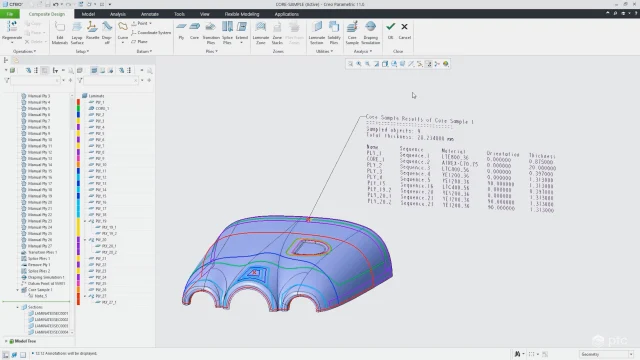
More powerful MBD tools
Creo 11 has better model-based definition (MBD) tools that allow users to organize design data in simple, human readable tables. The new release also makes it quicker to create MBD annotations for cylindrical features. PTC has also updated Creo’s GD&T advisor to support the ISO 22081 standard for general tolerances.
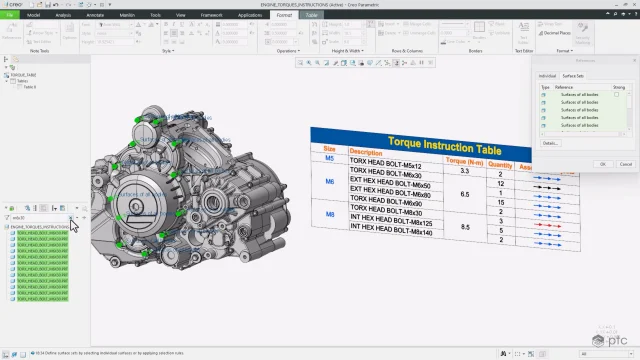
Better generative design
Creo 11’s generative design capabilities have been enhanced with support for bearing loads and constraints for planar symmetry and minimum feature size.
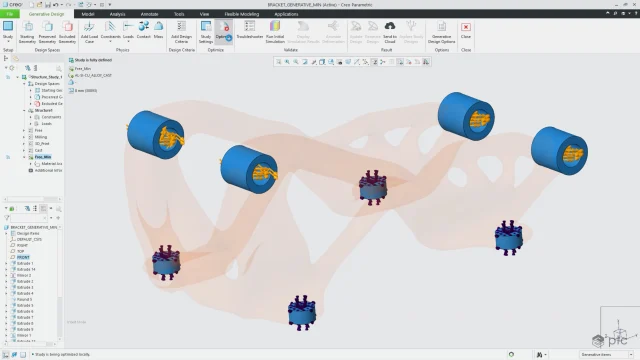
Simulation enhancements
The Ansys-powered Creo Simulation Live now includes expanded results for all studies. It also adds conjugate heat transfer, which will allow designers to simulate heat transfer between solid geometry and fluid bodies. Creo Simulation (a separate package) now offers transient structure analysis.
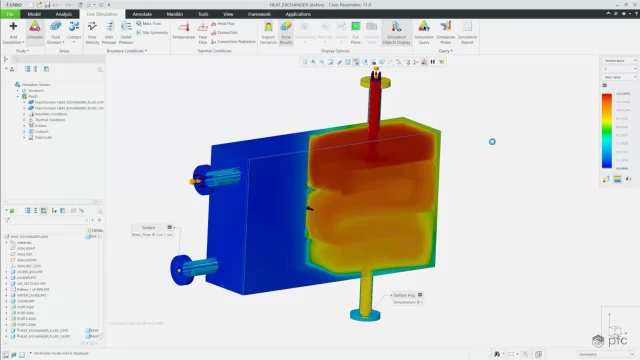
Manufacturing improvements
Both additive and subtractive manufacturing have been enhanced in Creo 11. On the additive side, users can now connect multiple lattices with different cell types with a single, continuous lattice structure, and adjust pore size for stochastic lattices. Creo 11 has also expanded its 3MF and STL export options. For subtractive manufacturing, Creo 11 now features 4-axis rotary milling, plus improvements to both trajectory milling and the 4-axis area turning interface.

Creo+ updates
Creo+, the Software-as-a-Service (SaaS) version of Creo, was updated today alongside the Creo 11 launch. In addition to the core Creo enhancements, Creo+ received a few cloud-only improvements. PTC says the collaboration features of Creo+ are now easier to use, and now include support for mechanism assemblies. The SaaS software also received a few usability enhancements to monitor and report network connectivity and define shortcuts to launch Creo+.
